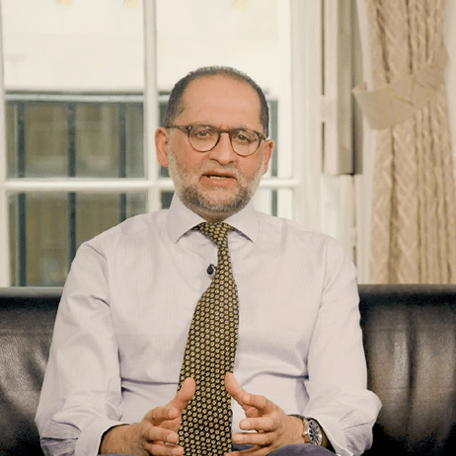It is no secret that relations between China and the US have soured in recent years. In January, the first conference between President Biden’s Administration and the Chinese delegation in Anchorage, Alaska was spectacular. Angry words were traded, “deep concerns” were aired and both sides were accused of grandstanding and human rights abuses. This tension is not new, but it has become increasingly public and accompanied by sanctions in both directions.
The US’s position of dominance in the world economy is under threat from China’s resurgence. Below we describe one framework for looking at this – through infrastructure and investment spend – which deliberately cuts out much nuance and instead emphasises brevity in order to give an overview of our thinking. Over the 20 years since China joined the World Trade Organization (WTO), it has invested huge amounts in roads, city building/urbanisation, technology and education. Arguably, just as the US has outsourced manufacturing overseas, it has also outsourced much of this infrastructure development to China. Globalisation has ensued, supply chains have elongated (in distance, but not necessarily in time) as technology has enabled rapid communication and more transparency in the supply chain.
The results have been wide-ranging and profound. Prices of goods in the US have been kept low as manufacturing has been offshored to cheaper locations. Low-paid jobs in the US have shifted overseas – hollowing out the American working class and leading to inequality with all its political ramifications, and China has successfully grown a middle class as an internal market for its goods. One historic enabler of this was the ability of Western companies to deploy their technology in China. Western companies salivated at the prospect of a new market of 1.4 billion consumers. They rejoiced at the cost savings and flexibility that were available from offshoring their manufacturing. And they relished the tax savings that could come from a global supply chain that allowed the shifting of intellectual property (IP) and profits to different, low-tax, geographies. This further enhanced the wealth of richer savers with investments in equities and contributed to growing inequality at home.
China's dual agenda
We are now reaching a tipping point. Inequality in the US is stoking disillusionment and political unrest. Equally importantly, the model of foreign companies holding IP and benefiting from the growing Chinese market has been superseded. Chinese technological innovation and modern infrastructure (much of which has leapfrogged the West) now make China a technological titan. President Trump’s administration recognised this and attempted to stop or slow the flow of innovation from the US to China but much of it is now self-sustaining. We have written in previous newsletters on how R&D spending has evolved between countries[1] – China is in its ascendance. China’s latest five-year plan emphasises the concept of “dual circulation”, whereby internal markets are prioritised, and the aim is to complement and strengthen them through the use of external markets. Within this policy are implicit understandings that supply chains for the West that are based in China are likely to be challenged in the future, and that China must continue to invest in innovation to both enable and encourage supply chains to come to and remain in China while simultaneously continuing the development of the domestic market and technology that is used by it.
In the early years after China’s ascension to the WTO there was less of an emphasis on intellectual property protections, but in recent years as the economy has become more innovative these protections have strengthened. This follows the same path as the US in the 19th Century – exemplified by Charles Dickens’ inability to copyright his works in the US, where he wasn’t a citizen. This shift towards increasing IP protection is typical of a country as it develops.
Globalisation has been a key enabler of the rapid scaling of new technologies and business models. The outsourcing phenomenon of the last couple of decades has been enabled by the internet and technology. In manufacturing it is much easier now, than say ten years ago, to sign a contract with a manufacturer in Shenzhen for the assembly and delivery of goods, leaving businesses able to concentrate on marketing and brand building in the West. The outsourcing of more and more aspects of business models enables companies to grow and scale rapidly without large capital investment. When a client base is spread across the world, manufacturers’ ability to consolidate demand and provide production capacity to a small, innovative company (and then scale it up) is much greater. We are seeing more and more aspects of start-up business models being outsourced, enabling start-ups to effectively buy scale-as-a-service. The same underlying economics have driven the success of the cloud operators. Outsourcing to Microsoft’s Azure or Amazon’s AWS provides a more flexible network with an ability to scale rapidly without a huge upfront capital cost.
One explanation for the different social constructs that China and the US enjoy is the role of the Chinese Communist Party (CCP). Whereas the post-1945 liberal model in the West supports universal human rights, rules and methods that support and preserve minorities and their views, the CCP has established its power and retains it through its success and acceptance by the majority. The Party’s success is tied into its ability to persuade the majority that one party rule is necessary for increased wealth and prosperity, national security and for China to exert its rightful role on the global stage. There is evidence that this approach has worked – the Three Gorges Dam, huge rail infrastructure and the replacement of slums with high rise buildings have been enabled by this prioritisation of the majority. There is, however, an underlying clash with Western values that creates international pressure. How that pressure is released will be telling in coming years – will it be through nationalist rhetoric, increased tensions over Taiwan, trade wars and an ebb in the trend of globalisation, or through reforms of the Party?
With this background, it is hardly surprising that China is increasingly focused on projecting its power out into the world. In part this is done through economics ties and loans for infrastructure. Global trade is dependent, however, on the US dollar – something that the US has been willing to exploit through sanctions. To illustrate this at the individual level, Carrie Lam, the CEO of Hong Kong, is paid in cash because she is under US sanctions and unable to get a bank account. Over recent years many billions of dollars of fines have been paid to the Office of Foreign Assets Control and other US regulators by banks with inadequate anti-money laundering procedures or that have failed in their regulated US dollar-based transactions. Many countries and individuals view this as extra-territorial overreach. The 2009 financial crisis originated in the US collateralised mortgage market, but its impacts were global. The flow of US dollar back into the US led to weakness and volatility in many currencies. It is therefore unsurprising that China is pushing countries to trade in renminbi rather than the US dollar. If we look at the cross-rates for the yuan versus local or ASEAN (Association of Southeast Asian Nations) currencies since the Lehman crisis, there is a definite reduction in volatility since 2010. Indeed, the basket of currencies against which the yuan is pegged has broadened and moved away from USD since 2010. Some commodities such as oil and soybeans are already traded in yuan, and we expect more to do so over time.
It is somewhat surprising to see the US departing from Afghanistan at a time when US relations with China are weakening. Afghanistan is located in a key position that enables the US to project power in Asia. It is near Western China (Xinjiang), it has access to the proposed new Silk Road and also borders Pakistan, a nuclear power. The withdrawal of the US army and air force bases from Afghanistan will make the US more reliant on other, non-military, measures to project power into the region. With the US pulling out of the Trans-Pacific Partnership trade agreement negotiations in January 2017, their options have diminished.
High stakes for chip makers
In technology we are seeing immense pressure from the US to both limit China’s development using US-based IP and to secure the US’s own supply chains. Thanks to the Taiwanese government’s willingness to back Morris Chang’s novel business model to separate semiconductor design from manufacturing in 1987, Taiwan Semiconductor Manufacturing Company (TSMC) is now the leading manufacturer of high-end semiconductor chips. Taiwan’s geopolitical situation is best described as complicated. Geographically it is adjacent to China and TSMC’s closest competitor is Samsung Electronics which has foundries in South Korea, also closely located to the Chinese mainland. As Intel has failed to keep up with the technology roadmap forged by TSMC, this has created a geopolitical risk in the supply of high-end silicon chips. The effective use of sanctions to ban Huawei from TSMC’s fabs has had huge ramifications for the company and for China’s innovation/technology ambitions. Over the last decades, China had attempted to prepare for this sort of scenario by pouring tens of billions of dollars into the industry to try to build a mainland rival to TSMC but so far remains many years behind.
The US is now hoping that the combination of Intel shifting to a fab model (i.e. manufacturing chips for third parties, à la TSMC) as well as TSMC’s new 5nm fab in Arizona will give it more geographical security of chip supply. Samsung is also planning to build a new fab in Austin, Texas. We expect that there will be substantial incentives for these three companies to develop capacity in the US – both fiscally and also on the revenue side from government requirements for purchasing US-manufactured chips. The higher costs of manufacturing chips in the US are likely to be passed on to customers given the tightness of the market and likely government-legislated demand. The US government probably views this as an essential aspect of gaining flexibility to withdraw their presence from Asia, and particularly on their positioning regarding Taiwan. In this context it is not surprising that, as a Taiwanese Champion, TSMC held off from announcing any investment in a US fab until it was necessary a year ago. If TSMC is making chips in the US, the US’s need for an independent Taiwan is diminished. The $12bn of capex to build the Arizona plant by 2024 is included in TSMC’s $100bn of capex for the next three years.
As an aside, current manufacturing capacity for semiconductor chips is insufficient. The rapid growth in applications and catch-up in orders after Covid-19 has led to a bottleneck. This is perhaps most apparent in automotive applications where lead times for some chips are well over a year. Without these chips, auto production has been curtailed. Supply chain management is increasingly important. Autos tend to have a pretty dominant position with most of their suppliers – something they have traditionally been happy to exploit to accelerate delivery of parts. However, they are a small part of most fabs’ revenues and haven’t been able to use their bargaining power to move up the queue for orders, resulting in what some commentators have described as “Chipageddon”.
Building domestic resilience
Localising supply chains is a theme that we feel is likely to accelerate and ties in with the increase in industrial automation and flexibility that we expect will become more pervasive in factories across the next decade. We feel that companies such as Fanuc will benefit from this trend as their robots tend to be viewed as more reliable and more flexible in their applications. Their new machines also use sensors and algorithms to enable pre-emptive maintenance and improvement of the factory line, relatively quickly and easily. They call this product FIELD, and we believe that over the long run it should improve returns for Fanuc and their customers.
One push back to the localisation of supply chains has been the impact of pollution as outsourcing production to a country with lower environmental standards can lower the cost of production. This is an increasingly important aspect of trade policy. At Davos in 2020, we saw the President of the European Commission stating that carbon border taxes are a “key tool” to “ensure that EU companies can compete on a level playing field" with other countries. A carbon border tax would theoretically be applied when goods are imported, with its magnitude depending on the implied CO2 emitted in production and the environmental standards of the country that made it. We would expect China to retaliate strongly to this suggestion.
Over the last few months, the importance of localised supply chains in Covid vaccines has become clearer. The US and UK have rolled out the vaccine rapidly. The EU has been much slower, in part because of early scepticism over the potential side effects of vaccinations, and also because they haven’t had the doses available to vaccinate. The battle with AstraZeneca, which played out in the press, over whether doses should be exported to the UK from Belgium, and the supply of raw materials for the vaccine’s manufacture from the UK, demonstrates how politically charged these debates can become. There are shortages of all sorts of consumables used in the biotech industry. This is similar to the shortages of personal protective equipment that were experienced a year ago at the start of the pandemic. When these shortages come to the fore then governments try to minimise local shortages by blocking exports. Cell growth media and the 2kl bioreactor bag liners are current areas of tightness, which should be good for our holding in Sartorius Stedim, particularly if nationalism results in the duplication of facilities in different geographies. This should increase demand for production capacity further – if it is geographically disparate it is likely to be less efficient and so may lead to raised prices.
In a similar vein to how China is developing a “dual circulation” strategy, the US is starting to show elements of a “Grand Strategy” with Biden’s recently announced $2.3trn infrastructure proposal. Within the $2.3trn is $50bn earmarked for semiconductor manufacturing and research as well as $180bn of federal funding for R&D. There is also $50bn allocated to the Commerce Department to bring supply chains back to the US. The US is clearly working to improve the resiliency of its domestic supply chain (attempting to repeat its success over the last decade in fossil fuels). Regardless of whether this marks a further withdrawal from Asia and its dominant role in globalisation or is a reaction to recent events, it is likely to provide the flexibility that is necessary for supply chains across the US and the rest of the world to become less integrated.
The macro backdrop and long-term structural changes underway can have dramatic, persistent impacts on the companies that we invest in. As high-conviction, patient investors we marry our thoughts on the macro, innovation and geopolitical backdrop with our bottom-up, fundamental analysis of each investment. The above is an example of just one of these inputs, but it is an important one. We remain intently focused on identifying stocks where our analysis illustrates a skew of potential returns to the upside.
[1] See http://uis.unesco.org/apps/visualisations/research-and-development-spending/ for a useful visualisation of R&D spend by country.
KEY RISKS
Past performance is not a guide to future performance. The value of an investment and the income generated from it can fall as well as rise and is not guaranteed. You may get back less than you originally invested.
Investment in funds managed by the Global Fundamental Team may involve investment in smaller companies. These stocks may be less liquid and the price swings greater than those in, for example, larger companies. Some of the funds may hold a concentrated portfolio of stocks, meaning that if the price of one of these stocks should move significantly, this may have a notable effect on the value of that portfolio. Investment in the funds may involve foreign currencies and may be subject to fluctuations in value due to movements in exchange rates.
Some of the funds may invest in emerging markets/soft currencies and in financial derivative instruments, both of which may have the effect of increasing volatility.
DISCLAIMER
This is a marketing communication. Always research your own investments and if you are not a professional investor please consult a regulated financial adviser regarding the suitability of such an investment for you and your personal circumstances. It should not be construed as advice for investment in any product or security mentioned, an offer to buy or sell units/shares of Funds mentioned, or a solicitation to purchase securities in any company or investment product. Examples of securities are provided for general information only to demonstrate our investment philosophy. It contains information and analysis that is believed to be accurate at the time of publication, but is subject to change without notice. Whilst care has been taken in compiling the content of this document, no representation or warranty, express or implied, is made by Liontrust as to its accuracy or completeness, including for external sources (which may have been used) which have not been verified. It should not be copied, forwarded, reproduced, divulged or otherwise distributed in any form whether by way of fax, email, oral or otherwise, in whole or in part without the express and prior written consent of Liontrust.







